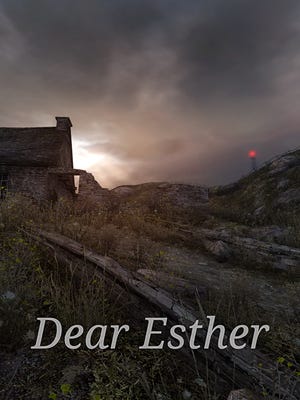-

Review | Dear Esther Review
Read letter day.
-
Review | Dear Esther
Uncharted terrain.
-

Meet Adrian Chmielarz, the Bulletstorm guy whose world was turned upside down by Dear Esther.
-

Feature | The doors close on The Chinese Room - for now
"We're done with walking simulators."
-

Twitch Prime's free games for February include Downwell, Dear Esther
Plus Sokobond, The Flame in the Flood, and more.
-

Feature | The doors close on The Chinese Room - for now
"We're done with walking simulators."
-

Dear Esther walks to PS4, Xbox One next month
Curve ball.
-

The Chinese Room teases isometric RPG Total Dark
Tabletop inspired RPG coming to PC.
-

Feature | The Chinese Room: A look behind Britain's boldest studio
"Never so sure our rapture to create..."
-

Humble Indie Bundle 8 might be the hottest one yet
Hotline Miami, Little Inferno, Proteus, Capsized, Dear Esther and more.
-

Meet Adrian Chmielarz, the Bulletstorm guy whose world was turned upside down by Dear Esther.
-

Dear Esther artist working on an "open-world S.T.A.L.K.E.R-like game without weapons"
Fancies doing it entirely on his own.
-

Four free indie games this weekend on OnLive
Dear Esther! Lume! PoP! Defense Grid!
-

Opinion | When Is a Game Not a Game?
Why imposing a definition can prove problematic.
-
Dear Esther creator at next GameCityNights
An address to fans.
-

Preview | Proteus Preview: A Musical Odyssey
In a beautiful place out in the country.
-

Play IGF-nominated indie games for free via OnLive
Dear Esther! Frozen Synapse! To the Moon! SpaceChem!
-

Feature | Game of the Week: Dear Esther
Are arts game?
-

Indie game Dear Esther profitable in less than six hours
Sells over 16,000 units day one.
-

Review | Dear Esther Review
Read letter day.
-
Review | Dear Esther
Uncharted terrain.









